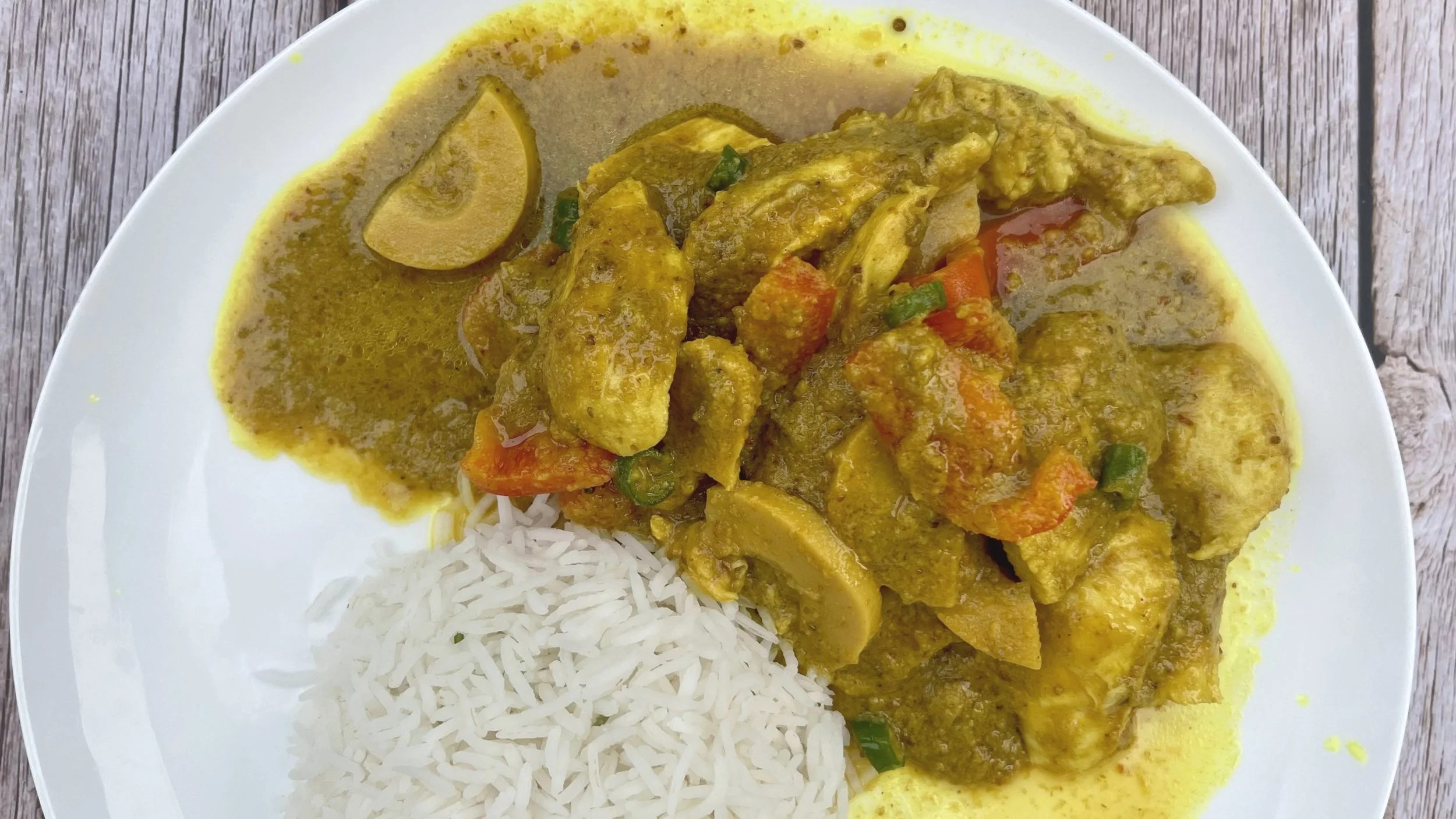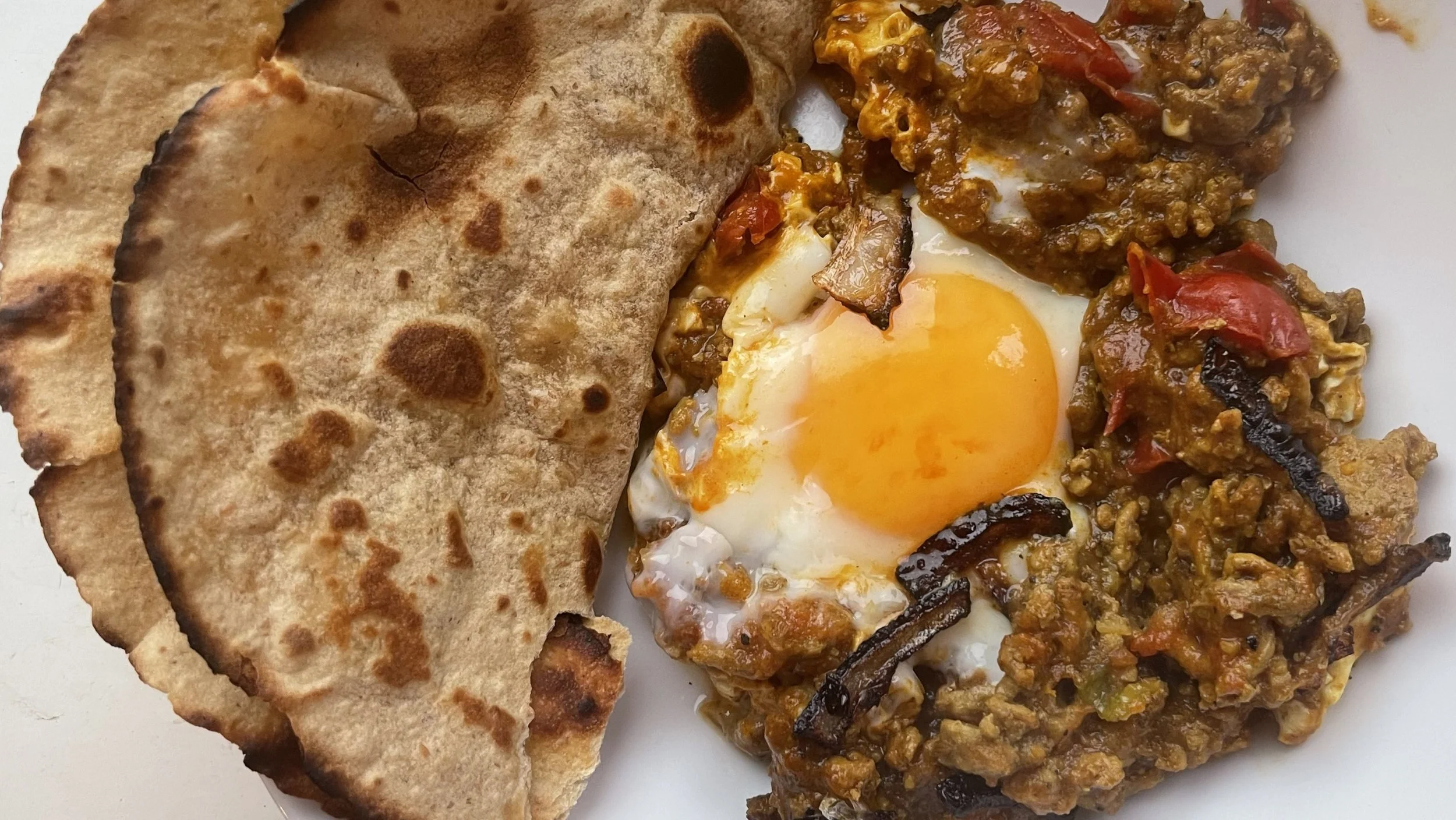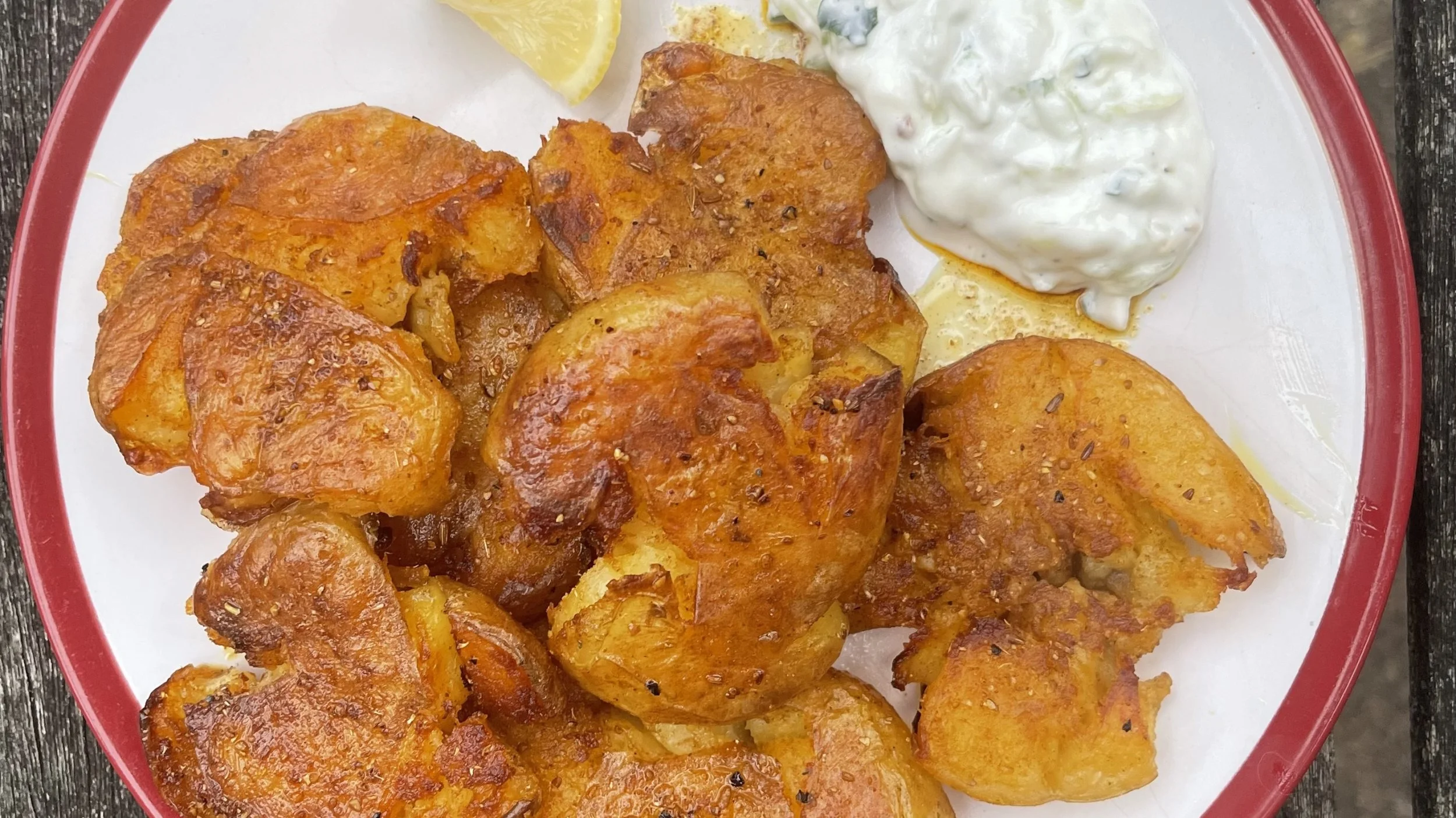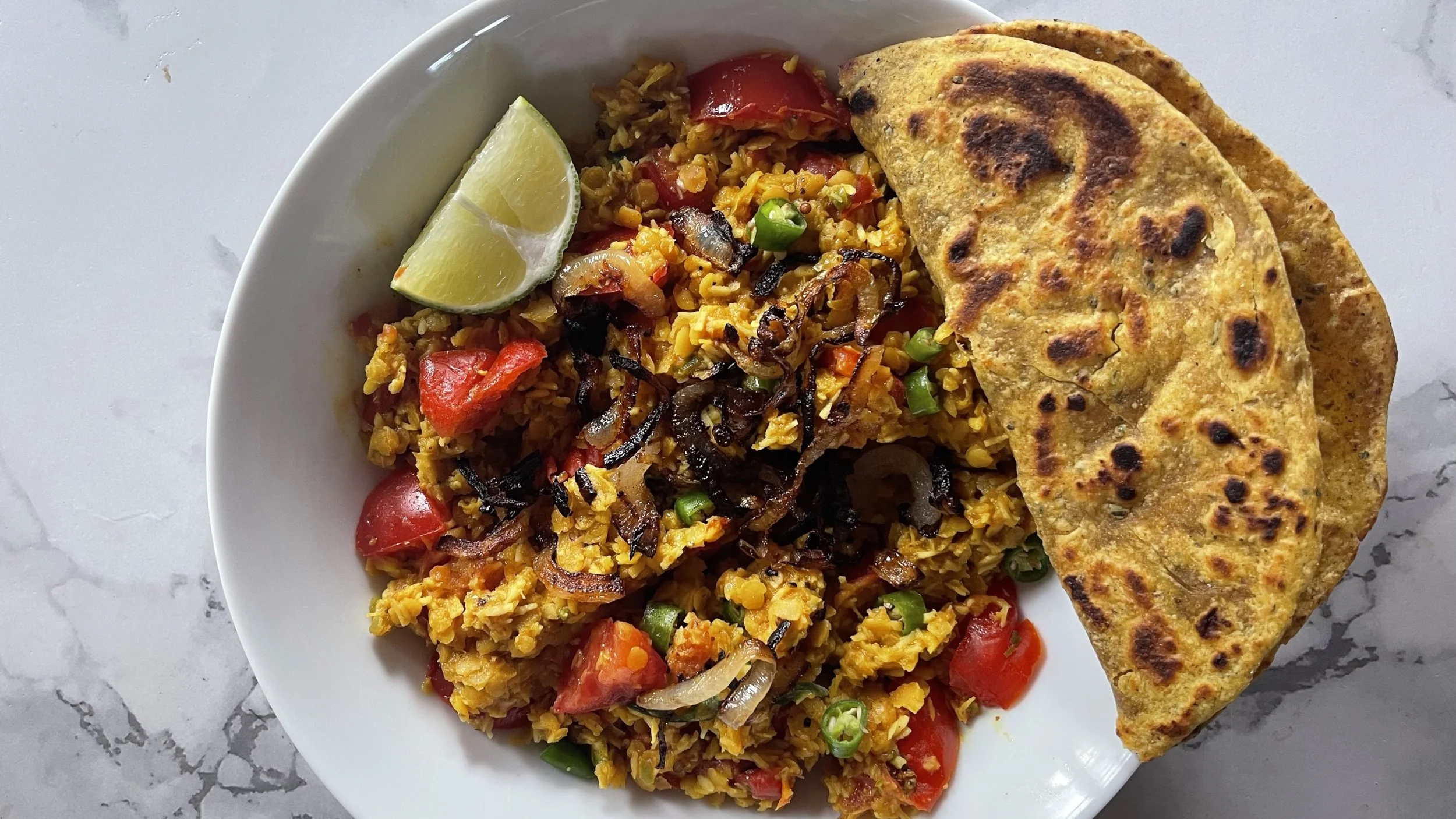Glossary of Spices
Learn about all kinds of spices and herbs in your store cupboard. Discover how to use them in your cooking for flavour, health & aroma.
In this day and age most of the ingredients below can be found in your local supermarket (albeit sometimes at great cost!), in Asian stores or online, where there are numerous providers of basic ingredients.
Agar – Agar – essentially sea weed extract – not to everyone’s taste (I hate it!) and used in desserts
Annatto – kesumba in Malay, a flavourless natural yellow/red food colouring agent (see also beetroot powder)
Asafoetida (Hing) the powdered resin from the small ferula foetida shrub has a very strong smell and flavour, but is essential (in small quantities) for a lot of Indian curry dishes especially vegetarian – easily available.
Asam Gelugor - Nornally comes in slices and is the dried friut of a tree native to the malay peninsular, bitter taste and used as a substitute to tamarind
Aubergine – Thai Unlike the European variety (which is great in a vegetarian dish) the Thai aubergine, or pea eggplant, is small, green and the size of a large pea! Can be bitter but great in a Thai green curry!
Bamboo shoots – easily available in tins – great for Thai curries and quite a few Chinese dishes
Banana leaves – soften by dipping in boiling water or put in the microwave for 1 minute. Used to impart a certain flavour when used as a wrapping for steamed rice or fish or on a charcoal grill – also useful as a disposable plate! Available in Asian food stores or over the internet.
Bay leaf – best used as a flavouring for north Indian dishes such as a Korma.
Bean sprouts - essential for most Chinese stir fries, readily available, but very short shelf-life!
Beetroot powder – Used to naturally colour food red - safe and widely available over the net or in health food shops (see also Annatto) – surprisingly expensive though……
Blacan/blachan - Malay name for dried shrimp/prawn paste essential for most South East Asian dishes – normally needs to be roasted before use – see also Kapi.
Betel leaves – used as a flavouring when steaming fish in banana leaves or eaten fresh.
Blade mace - The outer ‘aril’ of the nutmeg seed, it has a distinctive flavour but use sparingly (never use ground!).
Buah keluak - or Indonesian black nuts - very specific flavour used in Peranakan cooking especially a dish called 'ayam buah keluak' .poisonous raw and need to be soaked for at least three days to render them harmless, well worth the wait!
Cardamom – Green, another essential curry ingredient! Contrary to popular wisdom use the whole pod – it has a lovely light and fresh flavour. Often chewed raw after a meal as a breath freshener.
Cardamom – Black large very strong ‘smoky’ smelling seed, used sparingly as the flavour can become overpowering, but rewarding if used correctly!
Cassia bark – see cinnamon
Candlenuts - used as a thickener in South East Asian curries – mildly toxic when raw so make sure they are well cooked! Available in most Chinese supermarkets
Caraway – very distinctive strong nutty smell and flavour, used in a lot of Thai and Burmese curries – use sparingly.
Chinese greens – generic term for a number of vegetables used in cooking and stir fries – see choi sum, kai choi, kai lan, Pak choy, Tat soi and Tung choi – to name but a few!
Chillies - someone could write a book about them in their own right - hang on, they have! Capsicum ‘heat’ is frequently confused with ‘spicy’ which is completely different and the product of spice mixtures. If possible avoid powder, buy dried or flaked chillies and grind them yourself – remember chillies range from very mild (jalapenos) to very hot (naga, infinity) chillies. The chillies themselves actually do have very different flavours and should be used for different types of curry where ‘heat’ and flavour levels are varied – but remember it’s about flavour, not blowing your head off! See below
Chickpeas – A standard staple and one of my favourites for dishes from North Africa to India – fantastic and a hard to beat combination when used with potatoes…
Choi sum – fantastic Chinese green, great in stir fries, and to my mind at its best when in flower (small edible yellow flowers - think flowering broccoli).
Cloves – I don’t think there is anyone who has not come across cloves! Essential for lots of curries, but use sparingly!
Coriander – either in powder form (not recommended) or seeds this spice forms the backbone of most curries – an essential ingredient! The fresh leaves are used as garnish and a vital flavouring to certain curries.
Coriander root - is an ingredient made from the root of the coriander plant and pound into a paste to produce an intense flavour and an essential ingredient to most Thai, Malay and Indonesian cooking. Surprisingly the root is difficult to come by, even in well stocked Chinese supermarkets - the simplest solution is to buy on line or (better) grow the coriander yourself (see below). Failing that, use lower stalks (remove the leaves and reserve as garnish) and mash into a pulp
Coconut – desiccated, dried coconut very good at using as a sprinkled dressing or added at the last minute to coconut-based curries.
Coconut – milk, essential to most south Indian curries or more specifically most South Asian curries. The full-fat version is always better.
Coconut – cream this is available in small tins or cartons as a liquid, and is great for adding richness to a sauce. You can also buy it in blocks to add to a sauce, thinning with as much or as little water as required.
Cinnamon - the inner bark of cinnamomum verum, essential for most Indian curries, closely related to cassia bark which is used mostly in SE Asian cooking, but to be honest there is very little in it as regards flavour – use sparingly, too much will ruin a curry!
Cumin – another curry essential. Don’t buy powder, use the seeds instead. Also used widely in Mexican food.
Curry leaves – an essential garnish for most South Indian dishes. If you can’t find fresh (although they are available online), then source dried (only use good quality and recently dried as this concentrates the flavour): if it’s too old it tastes like straw!
Daun Laksa – see Vietnamese coriander
Daun Salam – often call Indonesian Bay leaf – actually a laurel but used in the same way as bay leaves – there is no substitute, so if you can’t get them, then omit entirely!
Drumsticks (Murunga) - A sort of bean in appearence but actually the seed pods of a tree, used in a lot of South Indian or Sri Lankan curry. - very fibrous, but popular in vegetarian dishes.
Eryngo – (ketumbar java in Malay) sometimes called long leaved coriander, but has a sharper taste and usually used to mask stronger flavours. Commonly used with coriander in curries and soups – always use fresh.
Fenugreek seeds - small,l very hard seeds essential for most Indian dishes with a distinctive nutty flavour – widely available.
Fenugreek leaves - taste is completely different than the seeds - adds a distinctive flavour to a number of Indian curries – easily available dried, although buy in small quantities as will go stale.
Fennel seeds - essential to a lot of SE Asian curries, has an aniseed flavour – again use sparingly.
Fish sauce – Along with soy sauce and oyster sauce, we regard this as part of the ‘Holy trinity’ of SE Asian stir fry cooking – readily available.
Fish wort – Very similar to Vietnamese coriander and used in the same way. Has a ‘fishy’ flavour, always use raw.
Fried Onion flakes – I regard this as an essential garnish for fried rice in particular. Thinly sliced shallots deep fried until golden – use immediately or (well drained) store in an airtight container. You can also use chopped spring onions but they have to be flash fried i.e. very hot oil and just for a second or two!
Galangal or lengkuas in Malay.- similar to ginger (but not related), it has a more subtle peppery flavour – essential for our SE Asian ‘secret sauce’.
Garam masala - careful blend of different spices used in a lot of Indian dishes – there are quite a number of different versions.
Garlic – what more to say – essential for all curries and as long as balanced with onion/shallots and ginger/galangal - the quantity used is up to individual taste!
Ghee or clarified butter (also available in vegetable form) regarded by most curry purists as essential for Indian dishes for ‘tempering’ the spices, to be avoided if you are weight conscious! Widely available.
Ginger – like garlic this is essential for most Asian food, if possible always use it fresh (and to enhance the flavour, wash but don’t peel it!). Ground ginger simply cannot compare with fresh for the purpose of curry making!
Gram flour or chickpea flour, widely used for onion bhajis and also in Sambhar powder.
Hoi sin sauce – classic Chinese sauce, essential for making ‘Char sui’ and used in a lot of other Chinese dishes – readily available.
Karela (bitter gourd or bitter-melon) - The bitter taste is not to everyones liking , soak overnight in brine to reduce the bitterness and then cut into discs and dry - then fry! (strangely addictive!)
Kala (Black salt) - A lot has been said about black salt (it’s actually pink in colour). It is regarded as a vital ingredient in Indian 'chaat' mixtures, but at the end of the day it’s just salt!
Kapi - Similar to Belachan i.e. salted shrimp paste but ready to use.
Kai choy – this is another Chinese mustard green, used in stir fries or (better) as pickled.
Kai lan – (Chinese broccoli) as suggested by its western name it is similar to broccoli, but with a stronger flavour and a mildly bitter taste.
Kerisik or roasted coconut, gives a very distinct flavour to SE Asian curries. Traditionally gently roasted to produce an oily powder – however using a block of coconut cream and stinging it in a microwave for a minute at a time (stir and then another minute) for 3 to 4 minutes gives a great result – tip from Norman Musa!
Kecap manis - essential for a lot of SE Asian dishes, a thick dark sweet(ish) sauce akin (but it is not) to a mixture of Soy sauce and fish sauce, readily available.
Kokum - The fruit of a tree related to the mangosteen, the sour flavoured skin of the fruit is sun-dried and used in a similar way to tamarind.
Lemon grass - fresh - readily available in supermarkets this is essential for quite a few SE Asian dishes. Freezes beautifully. Also easy to grow yourself!
Lemon grass - dried – don’t bother!
Lime (kaffir) leaves - limau purut in Malay. These are the leaves of a small thorny tree and give a very ‘Thai’ taste (although used far more extensively in Malay and Indonesian food!) to any dish when added. Fresh leaves make a good garnish but against popular perceived wisdom, dried and ground leaves are far better as an ingredient, as long as the leaves are of good quality – you can grow your own!
Mango (amchur) powder - bitter/strong tasting, this is made from dried Mango and is essential for most dishes involving chickpeas.
Mint – dried used in a number of our curries especially good with fish. Used in several of our Indian spice blends. Quality is very important here.
Mustard seeds - black Another of one of those essential north Indian curry ingredients.
Mustard seeds - yellow A little hotter than the black mustard seeds (and to my mind more fragrant), helps give a yellow colour and is a good substitute to chilli in milder curry mixes aka ‘British curry powder 1970’s-style’.
Nigella seeds – Also known as onion seeds, these have a very subtle flavour. Best used in milder curries as stronger spices tend to drown the flavour.
Nutmeg – used a lot in curry making. Be warned, use sparingly as the strong and distinctive flavour will destroy a curry for the unwary. Grate your own from the seed, never use pre-ground!
Oil – coconut, use if you want to boost that coconut flavour – i.e. Sri Lankan curry.
– groundnut or peanut oil used mostly in SE Asian curry cooking – easily available
– vegetable, use mainly for Indian cooking if you can’t get (or don’t want to use) ghee. Can be used as a substitute for any of the above. Little difference between sunflower, rapeseed or general purpose vegetable oil.
Okra (or ladies fingers)- Green pulpy vegetable, for use wash and dry thoroughly - does not need a lot of cooking and never cook in water as it becomes sticky and unappetising!
Oyster sauce - along with fish sauce and soy sauce this is one of the ‘holy trinity’ of stir fry cooking! Easily available.
Paprika – quite redd(ish) ground chilli. Usually used as a very mild flavouring/colourant but we use the smoked variety for Mexican blends. Gives a vindaloo (see our Goan Red Curry blend) a very distinctive flavour.
Pak choy – readily available in supermarket, this is the classic ‘Chinese’ green to use in soups stir fries and more formal dishes.
Pandan (or screw pine) – leaf, widely used in SE Asian cooking and are used to flavour curries (especially Rendang) and other dishes (such as Nasi lemak or coconut rice) - tie the leave(s) in a knot and cook as part of a sauce as a flavour enhancer. Remove before serving and yes, available on the internet!
– essence, this is a cheat but easy – use just a teaspoon or two in your SE Asian curry to give it that certain flavour! (taste before adding more - it has a very strong flavour...)
Paneer - Indian cooking cheese, do not eat raw! This can be fried and curried.
Pepper (black) – always best to store your pepper as corns – they will last forever, and then grind as required – used extensively in curry making – but comparatively expensive and will darken your sauce.
Pepper (white) – Slightly milder pepper and is what you would regard as ‘table’ pepper – used mostly in Chinese dishes as the black variety will change the colour of the dish.
Pomegranate powder – bitter sweet powder made from the seeds of the pomegranate fruit – used frequently in North Indian curries.
Poppy seeds – more important for texture and appearance than flavour. Used in several of our spice blends.
Plum sauce – not to be confused with Hoi Sin sauce, slightly more ‘plum’ tasting (if that makes sense!).
Pork fat - extensively used to add an extra layer of flavour to dishes such as Kway Teow. Keep that layer of fat from under your roast crackling and freeze in small pieces. Use sparingly!
Powder – almond, use as a thickener – but also has a pleasant flavour.
Powder – rice, use this as a thickener for curries.
Rice wine – Gives a very distinctive favour to most Chinese/SE Asian dishes – don’t try drinking it - you will not like it!
Serundeng - A fiery dipping sauce, great for simple dishes such as egg fried rice. See our recipe here.
Sesame oil - strongly flavoured, use sparingly in stir fries and some soups – also used in some north Thai or Burmese dishes!
Sesame seeds – lightly roasted, these seeds are used widely as a garnish for quite a few Chinese dishes.
Shallots – if making SE Asian ‘secret sauce’ use instead of onions of roughly a ratio of four to one – a slightly more subtle flavour than onion.
Shichimi spice - Japanese spice blend, excellent as a marinade or condiment.
Snake beans – Long tough green beans used in a lot of curries. We recommend simply substituting green ‘French’ – they actually taste better!
Soy sauce - along with being a condiment it is also an essential ingredient in stir fries, and can be used as a very good, quick (if not better) substitute for tamarind water in some of our SE Asian curries.
Soy bean paste (Taucu ) – quite salty and usually mashed - used as an added ingredient for SE Asian dishes.
Star anise - very strongly liquorice flavoured spice, essential for Chinese 5 spice powder and for a lot of Malay and Indonesian dishes. Be warned, a little goes a very long way!
Sugar - brown Unrefined sugar – for curry cooking much better than white sugar.
Sugar – Palm Hard and blackish this is a great substitute to cane sugar, so use where possible as a substitute in most SE Asian dishes.
Szechuan pepper – adds a distinctive pungent/spicy flavour to Malay curries – use instead of pepper.
Tamarind (Asam in Malay) - the dried pulp of Tamarindus indica used as a bitter sweet dark flavouring in curries. Buy it in blocks to make your own Tamarind water, which you can then freeze in ice-cube trays ready to use, or you can buy a ready-made paste in a jar (this is very concentrated so follow the recipe!). Soy sauce and a little lime or lemon juice is an excellent and easy substitute!
Tat soi – another ‘Chinese greens’ variety – easy to grow! Use in soups and stir fries, slight peppery flavour.
Tempering - also known as the 'bhoona', ground spices are fried in oil to remove the raw taste, this is not essential to my mind and is a fatal error (in curry terms) if you burn them! Don't bother if you are unsure!
Teriyaki sauce - excellent marinade for chicken or beef
Thai Basil – absolutely essential for most Thai dishes if you want that truly authentic taste! It is becoming more common in supermarkets, but a whole variety of oriental basil seeds are readily available so you can easily grow your own! If you can’t get it just use normal European basil which gives good results as well!
Tindora - vegetable that resembles a small cucumber, rather bland on its own but absorbs flavours especially spices - excellent as a curry side dish!
Tung choi – another Chinese green, sometimes called morning glory or water spinach - use as you would spinach.
Turia (Turya) - A squash that resembles a firm cucumber - peel and cut into 'chips' excellent when curried with potatoes.
Turmeric – The root (rhizome) of a ginger-like plant, another essential curry ingredient. You can buy the fresh root but it is more commonly used in the powdered form. It is mildly anti-septic and also an anti-oxidant, one of the current super-foods. This is the curry ingredient which ruins your clothes!
Turmeric - Leaf - used to wrap food in (especially fish) to impart a special flavour, they can also be pickled !
Vinegar – coconut, readily available and adds an authentic taste to any dish (especially Goan or Thai) that requires vinegar.
– white malt – if all else fails use this!
– rice - a milder vinegar to malt used extensively in Thai cooking. Chinese rice vinegar 'Chinkiang vinegar' is quite thick and slightly sweet - a great addition to any chinese dish!
Vietnamese coriander - also known as Vietnamese mint or laksa leaf, this is used fresh (never cooked) in soups, curries, stir fries, grilled fish and as a garnish for Indo-Chinese curries. Quite a surprising peppery hot flavour with a slightly lemony taste – easy to grow yourself!
Water chestnut – crisp Chinese vegetable readily available canned, great in any number of Chinese dishes.
Wonton skins – thin pastry sheets used for making wontons – in soup, fried or steamed, easily available in Chinese supermarkets and freeze really well (you can also re-freeze them so stock up! We have!)
Xo Sauce - pronounced zo, as in rhymes with toe! Originating in Hong Kong, this is a ready-made dipping sauce containing prawn paste and dried scallops. It is great on its own, but really comes into its own as a cheat for making Pad Thai, Singpore Noodles and other dishes when in a a hurry.
Explore the Spices of the World
Find new favourite spice combinations with this collection of recipes from around the world in our Recipe Cookbook….






















Fancy a light recipe over the Christmas period, and you’ve got a spare carton of our seasonal spice blend? Try out these…